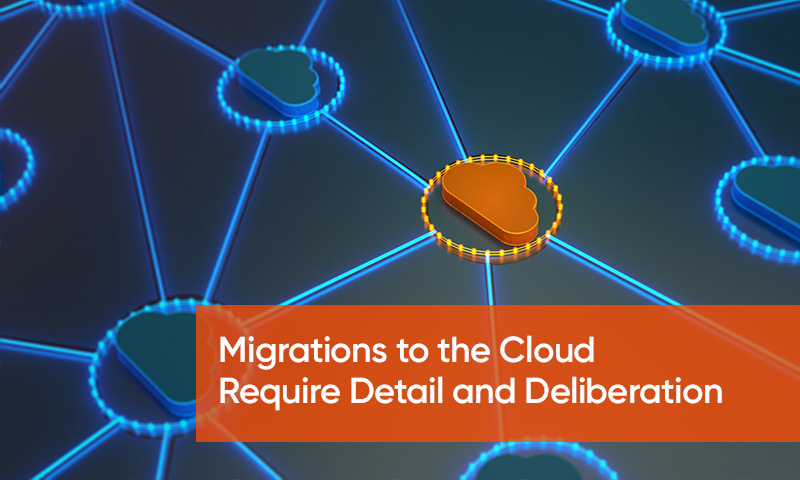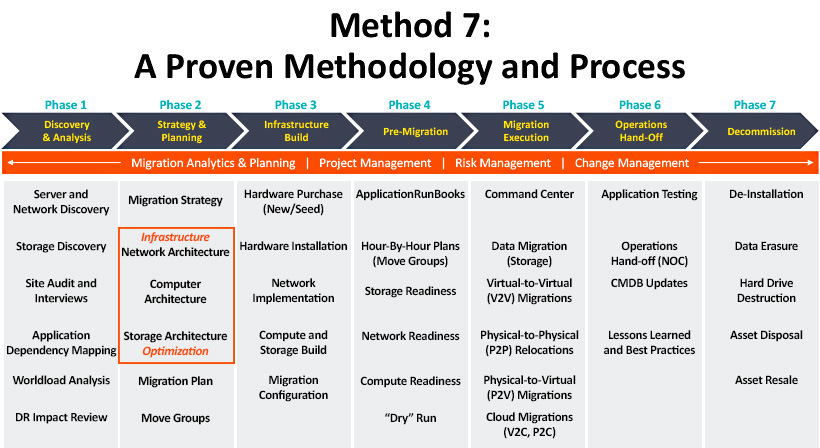Data centers are under the microscope these days. For some companies, mergers and acquisitions have resulted in managing multiple facilities. For others, legacy locations have gotten out of hand, both financially and operationally.
Whatever your scenario, the common ground is the need to improve security, performance, reliability and the bottom line. And where to seek such relief? These days, the blue sky for many applications in the data center is the cloud.
Yet any migration to the cloud—whether it’s about consolidating locations, streamlining operations or updating infrastructure—should start with careful planning. Bringing in an outside expert can prove invaluable in defining strategy, avoiding pitfalls and achieving maximum impact.
As part of developing a cloud enablement plan, first determine your comfort zone on the cloud adoption spectrum. A few important questions also need to be considered upfront. Are you fully sold on cloud? Are you heavily virtualized already? Do you need to keep business-critical applications in-house?
The answers to these questions and more can position you on the right path while a vendor-agnostic partner can offer an objective, pragmatic approach to developing a cloud transformation roadmap. While many big-name hardware providers tout migration services, choosing one tied to a specific platform is like letting the fox in your henhouse. Most manufacturers want to sell lots of new hardware—perhaps more than you need. With most of today’s data centers utilizing a variety of manufacturers’ equipment, a broader skill set is needed across multiple platforms and technologies.
To ensure a smooth and seamless move to the cloud, consider the following process phases, as illustrated in this slide and explained below:
Discovery and Analysis
Keep an open mind. Avoid concrete or pre-conceived notions, which could stifle beneficial results. Start with a thorough audit of assets at the site(s) involved, including auto-discovery of all compute, network and storage as well as applications, including dependency mappings. Achieving visibility is a key enabler to a smooth cloud transformation.
Consider enlisting a third party with specialized tools to perform auto-discovery of all physical and virtual assets as well as applications. An understanding of which systems are dependent on which part of the ecosystem is key to determining whether you should move certain applications to the cloud or keep them in-house. Performing a workload analysis and disaster recovery review complete this stage.
Strategy and Planning
Once the current state is fully discovered, begin planning the migration strategy by evaluating application workload placement. When defining the best architecture to support the strategy, many times the best solution may include a combination of public and private cloud (internal or hosted) as well as on-premises solutions. As there is no perfect one-size-fits-all, the hybrid approach usually checks the most boxes.
After optimizing the infrastructure, including cloud, network, compute and storage architecture, create a migration plan that defines the project down to the application level. Make sure each application has its own migration strategy.
Infrastructure Build
When migrating to the cloud, selecting the right cloud provider and sizing your environment is a critical step. We find most organizations overprovision cloud by 30%, wasting millions of dollars annually. For applications staying on-prem, consider any hardware purchases necessary for the migration. In helping hundreds of customers with their data center migration, Curvature has found most organizations purchase new network, storage and compute gear, so the physical and virtual migration can be accomplished without downtime.
Pre-Migration
This stage tends to overlap with the build phase. Delve deeper into details about how the actual migration will take place. Curvature creates a “run book,” which details the process step by step. For example, for each server, here are the 20 steps to follow. The same approach is replicated for each application. The creation of an hour-by-hour and test plan prepares the various groups involved and sets the stage for a walkthrough to determine readiness of cloud, storage, network and compute assets.
Migration Execution
With the right infrastructure in place, the environment is ready to receive the migration, so it’s time to “push the button.” The result will involve numerous and varied migrations, from moving applications to the cloud, putting servers on a truck for a cross-country trek or virtually migrating from one data center to another.
Operations Hand-Off
The focus now is on returning operations to a ready state. A round of testing and validation will determine the status of applications. Then update all documentation and the configuration management database (CMDB). It’s also beneficial here to document, reflect—and recall—all lessons learned during the migration process.
Decommission
With the migration complete, now focus on the proper removal of all unwanted hardware. As part of the de-installation, make sure to enlist a provider of IT asset disposal (ITAD) that also provides data erasure.
These are areas where Curvature’s suite of value-added services can optimize any cloud migration or data center consolidation. With decades as the leader in the market for third-party maintenance and pre-owned equipment, Curvature offers top dollar to customers for their viable networking, storage and compute gear. It has been our experience on numerous occasions that customers use the cost savings from maintenance and selling pre-owned hardware to pay for substantial portions of their data center migrations or other budget-hungry IT innovations.
Expect public, private and hybrid clouds to remain a hot topic as more organizations experience the benefits, including seemingly unlimited resources, friendly billing models, improved disaster recovery capabilities and flexible workload disposition. But before jumping on the bandwagon, make sure all your business leaders are aligned and choose the right partner to help ensure the project’s success.



